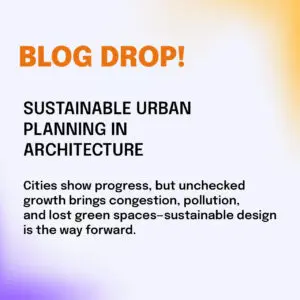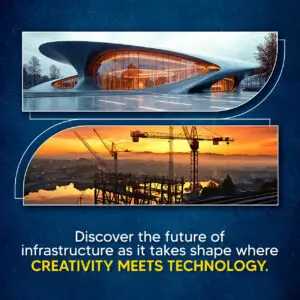
In the era of rapid urbanisation and climate consciousness, the focus has shifted toward building designs that are not only structurally efficient but also environmentally responsive.
Smart building materials lie at the heart of this architectural revolution, making the structures more energy-efficient, resilient, and weather-resistant. Advanced substances engineered to respond to environmental stimuli, such as heat, pressure, moisture, and light, have become indispensable in the global architectural scenario.
From self-healing concrete to thermochromic glass and shape memory alloys, these smart materials in high-rise construction are redefining possibilities.
As cities grow vertically, let us learn how the integration of smart materials into architectural design is becoming a cornerstone of sustainable development.
How Smart Materials in High-Rise Construction Have Evolved over the Years
Over the past two decades, significant advancements in material science have introduced a new generation of smart materials engineered to sense and react to external stimuli.
For instance, self-healing concrete, developed in the early 2000s, incorporates bacteria or chemical agents that automatically seal cracks when exposed to moisture, extending the lifespan of structures.
Similarly, electrochromic glass, which can adjust its transparency in response to sunlight exposure, has been increasingly adopted in skyscrapers to regulate indoor temperatures and reduce energy consumption.
Initially, traditional building materials such as concrete, steel, and glass dominated the skyline, valued for their strength and durability. However, the integration of shape-memory alloys, phase-change materials, and photovoltaic surfaces in façades and structural elements demonstrates how smart materials have evolved from niche innovations to essential tools in modern high-rise construction.
However, the integration of shape-memory alloys, phase-change materials, and photovoltaic surfaces in façades and structural elements demonstrates how smart materials have evolved from niche innovations to essential tools in modern high-rise construction.
Adaptive Facades & Responsive Structures Transforming Urban Design
As students or aspiring architects, you must have seen world-famous structures like the Al Bahar Towers in Abu Dhabi or the Allianz Arena in Munich. As youngsters, you have a lot of scope and prospects to study the incorporation of smart materials in high-rise construction.
While the former is built with kinetic facades or geometry-shifting screens to adjust to various degrees of solar exposure, the latter is an example of smart sensors and cloud-based analytics to manage field conditions and lighting favourable for sports architecture.
The Edge in Amsterdam is often referred to as the smartest building. It utilises a blend of thermochromic glass and intelligent lighting systems, much like The Crystal, London, where smart glazing, automated ventilation, and advanced water recycling are eye-catching features.
An LEED Platinum-certified building is the Glumac of Shanghai, featuring indoor air quality monitoring and smart ventilation. In contrast, the DPR Construction Headquarters in San Francisco is a net-zero energy building with electrochromic windows and self-compacting concrete.
Shape Memory Alloys, Self-Healing Concretes Building a Flexible Future
The quest to create long-lasting, climate-resilient buildings has led to the development of smart materials in high-rise construction, such as Shape Memory Alloys (SMAs) and Self-Healing Concretes.
SMAs can return to their original shape after deformation, making them ideal for high-rise structures in seismic zones. Self-healing concretes are embedded with bacteria or healing agents that activate in the presence of moisture, allowing them to repair cracks and faults autonomously.
Beyond these, the architectural world is also exploring the potential of Graphene, a single layer of carbon atoms known for its exceptional strength, conductivity, and thermal properties.
Materials like Poly-Lactic Acid (PLA) — a biodegradable polymer derived from renewable resources are being studied for their applications in sustainable construction, particularly in 3D printing components and temporary structures.
Smart materials in high-rise construction are not only transforming the way we build, but they’re also reshaping the future of sustainable urban living.
At OmDayal Group of Institutions, empowering future architects and engineers with knowledge of these innovations is key to creating resilient, efficient, and climate-conscious structures.
By integrating emerging technologies into our academic framework, we are preparing students to design the skylines of tomorrow — where intelligence, adaptability, and sustainability go hand in hand.
Sources:
- https://newengineer.com/blog/smart-construction-materials-1509336#
- https://www.re-thinkingthefuture.com/materials-construction/a3397-smart-materials-the-future-of-architecture/#
- https://www.sciencedirect.com/science/article/abs/pii/S2214785321023543
- https://atriainnovation.com/en/blog/smart-materials-for-sustainability/#




